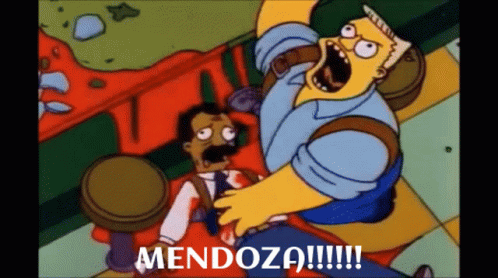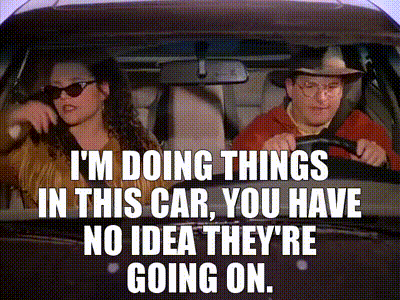
When a team hires an analytics-based head of baseball operations as the Mets did with David Stearns, it’s easy to expect them to adhere to the “middle manager” theory from that crock of shit known as Moneyball and install a nameless, faceless automaton to implement orders from the all-knowing front office.
The strategy persists today with clubs like the Yankees, Dodgers and Cardinals following it to their postseason doom and, worse, refusing to acknowledge the flaw in the theory that these middle managers do not know what to do when they are in the heat of the postseason.
However, there are times when a team hires a manager and gives him a certain level of autonomy. While the Mets hiring Carlos Mendoza to replace Buck Showalter appeared to be the latest in a long line of replaceable nobodies who were happy to have the job and took short money amid the understanding that they would do precisely what they were told, his early season moves have shown that he is going to act on his independent streak and flout current trends if the circumstances call for it.
There are several examples of Mendoza having a mind of his own already and Stearns giving him the freedom to exercise his judgment.
Against the Dodgers, he removed his starting catcher Omar Narvaez with pinch-hitter Tyrone Taylor because he was hunting for more runs. With only one other catcher on the roster, this is generally seen as a no-no. But with a 5-4 lead in the seventh inning and runners on second and third with two outs, it was a tactical gamble to get more runs and potentially put the game away. It didn’t work, but the Mets won anyway and the mere decision to take that step was indicative of his willingness to roll the dice and face postgame criticism.
Against the Giants, he removed starter Sean Manaea with two outs in the fifth inning with a six-run lead and the Giants threatening with two runners on base. Mendoza didn’t worry about Manaea getting a win, removed him and Reed Garrett got the final out. The Mets won 8-2.
Then on Sunday, he visited the mound in the bottom of the eighth inning to talk to starter Jose Quintana with two outs in a 1-1 game and almost every observer believing he was carrying a hook with righty Adam Ottavino ready in the bullpen. Instead, he allowed the veteran Quintana to pitch to Cardinals righty swinging Willson Contreras. Quintana struck him out.
These are not moves you’d normally see today and are not moves you’d ever see from the known puppet-managers.
Let’s not take this to mean that the Mets are going to win the World Series with an undermanned roster based solely on the strategic wizardry and fearlessness of their field boss. Barring a borderline miraculous turn of events, this team is not currently a championship contender if even a playoff team. We’re not back in 1980 when Billy Martin dragged an Athletics team to 83-79 after losing 108 games the year before. Nor are we ever again going to see any manager leave a body orchard of arms ravaged and destroyed as Billy did with Steve McCatty, Mike Norris, Matt Keough, Rick Langford and Brian Kingman.
(Just check the innings pitched at relatively young ages and the number of complete games. Even for that era, it was extreme.)
Never again will we see a manager free to do whatever they want to win today and not worry about tomorrow in the context of the team or the player’s future. That’s a good thing. Still, the constraining influence of front offices has become so oppressive that it’s a reasonable question as to why anyone with an ounce of self-respect would want the job to begin with.
The Dodgers would win just as many games in the regular season with a mannequin sitting in the corner of the dugout instead of Dave Roberts. In the postseason, they’d likely be better off.
Aaron Boone is far better now than he was when he first started and had a blank, bewildered look on his face when the speed with which the postseason decisions needed to be made and he couldn’t fall back on orders he was given and he failed miserably. If the Yankees replaced Boone, Brian Cashman is not hiring someone who will do anything different than what Boone does. So, what’s the difference?
Oli Marmol? He nearly singlehandedly blew the Cardinals’ National League Wild Card Series in 2022 and the team went into free fall after that. Of course, he was rewarded with a contract extension because he does what he’s told by the front office.
Some will point to stat-centric teams hiring managers who will be granted a certain level of freedom. Often, in cases like with the Giants hiring veteran manager Bob Melvin to replace Gabe Kapler, it’s done because the front office is on thin ice and if they have another bad year, they’re going to be out the door. As much as president of baseball operations Farhan Zaidi can point to knowing Melvin from their days together in Oakland, this is the fundamental reality. Desperation and self-preservation is a shaky and intellectually dishonest method of doing business.
A manager having some freedom within the current framework of numbers and tendencies is becoming more commonplace. The Cubs gave Stearns’ former manager with the Brewers, Craig Counsell, an unprecedented five-year, $40 million contract to manage the Cubs.
That too is a bit extreme, but that’s a discussion for another day.
Too many managers get into a high-stress situation and stare off into the distance like they’re trapped in Star Trek’s Kobayashi Maru – a no-win situation – to see how they respond. Trapped as they are between knowing what the front office told them and what they’re baseball instincts are saying, they’re the spinning pinwheel on MacBook, not knowing where to go or what to do as the crisis unfolds. Given the first month of Mendoza’s tenure, it suggests that he took the job to do the job and intends to manage the team instead of being a figurehead. When (if) the Mets are in a future postseason game and a moment comes where the manager needs to make an independent decision, it’s a positive sign that they have someone in Mendoza who has the balls to do what he feels is right rather than what he knows is safe.




